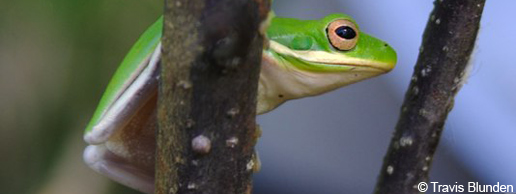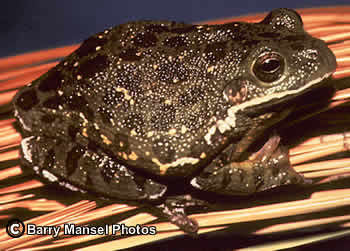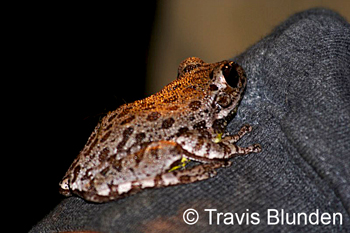
Barking Treefrog
Hyla gratiosa


Description: The barking treefrog is one of the larger, most stout and more spotted of all the tree frogs. Its coloring varies from dark brown, bright green, or pale yellow or grey, although some green coloring is evident throughout all color phases.
Habitat: Sandy areas in pine savannas and in low wet woods and swamps (e.g., willow oak-blackgum, cypress swamps). When inactive during cold or dry season, burrows under tree roots, vegetation, or in soil; otherwise mostly arboreal and thus dependent on trees near water.
Size: It ranges in size from 2 to 2 5/8 inches.
Reproduction: Female lays a clutch of up to about 2000 eggs after heavy rains in spring or summer. Multiple clutches have been documented in Georgia (Perrill and Daniel 1983). Eggs hatch in several days. Aquatic larvae metamorphose into terrestrial form in about 1-2 months.
Call: The barking treefrog is so named because of it nine or ten syllable bark-like call.
Click HERE to listen to the call of the Barking Treefrog.
(A new browser window will open with the sound file)
Development of these pages was a cooperative effort. Photos were supplied by Barry Mansell Photos and calls were provided by Paul Moler, state herpetologist for the Florida Fish and Wildlife Conservation Commission.


 Location: http://yourdomain.edu
Location: http://yourdomain.edu